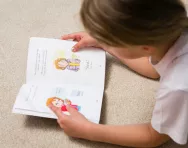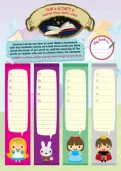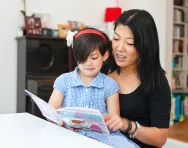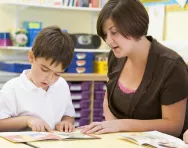Important update from TheSchoolRun
For the past 13 years, TheSchoolRun has been run by a small team of mums working from home, dedicated to providing quality educational resources to primary school parents. Unfortunately, rising supplier costs and falling revenue have made it impossible for us to continue operating, and we’ve had to make the difficult decision to close. The good news: We’ve arranged for another educational provider to take over many of our resources. These will be hosted on a new portal, where the content will be updated and expanded to support your child’s learning.
What this means for subscribers:
- Your subscription is still active, and for now, you can keep using the website as normal — just log in with your usual details to access all our articles and resources*.
- In a few months, all resources will move to the new portal. You’ll continue to have access there until your subscription ends. We’ll send you full details nearer the time.
- As a thank you for your support, we’ll also be sending you 16 primary school eBooks (worth £108.84) to download and keep.
A few changes to be aware of:
- The Learning Journey weekly email has ended, but your child’s plan will still be updated on your dashboard each Monday. Just log in to see the recommended worksheets.
- The 11+ weekly emails have now ended. We sent you all the remaining emails in the series at the end of March — please check your inbox (and spam folder) if you haven’t seen them. You can also follow the full programme here: 11+ Learning Journey.
If you have any questions, please contact us at [email protected]. Thank you for being part of our journey it’s been a privilege to support your family’s learning.
*If you need to reset your password, it will still work as usual. Please check your spam folder if the reset email doesn’t appear in your inbox.
The science of school reading schemes

Open up your child’s school reading book, and you’ll probably be somewhat underwhelmed, especially in the early stages. But despite the abundance of short sentences and three-letter words, an incredible amount of effort goes into the development of school reading schemes.


Claim A FREE Book Reviews Activity Pack!
- A huge collection of creative writing & reading comprehension resources
- Explore texts, deepen understanding, share opinions
- For Year 1 to Year 6
We asked Andrea Quincey, senior publisher for literacy at Oxford University Press, with 15 years’ experience in educational publishing, about the process of creating a successful reading scheme.
How reading schemes are developed
Behind the scenes of every reading scheme is an experienced team of publishers, expert educational advisors, authors and, sometimes, illustrators. Teams draw on the latest educational research: ‘What we know about how children learn best, and what makes them tick, is changing all the time,’ explains Andrea.
The Project X series, which Andrea helped to develop, was initiated by a team of concept authors who had an idea for a series of books about children who shrink. ‘We wanted to aim the series at boys in particular, as well as girls, because research showed that many boys were turned off by books,’ Andrea says.
Once a concept has been agreed, education experts and teachers are involved in revising the idea – for example, should the series include non-fiction as well as fiction? ‘We then create detailed briefs for the books in the series, and the accompanying support materials for teachers, and commission a wide range of authors,’ Andrea explains. The whole process of creating a new reading scheme, from initial research to publication, can take over two years.
The rules of reading schemes
The creation of a quality reading scheme involves the careful ‘levelling’ of every book. ‘Early books tend to focus on very specific phonics criteria,’ says Andrea. ‘We also look at the number of words, font type, font size and even where the words appear on the page.’
As children progress and books get longer, vocabulary, sentence length, sentence structure, number of words and the complexity and appropriateness of subject matter are all taken into consideration. ‘We have to ensure that the books support children at every stage of their reading journey, and that, even with all these rules, the books are interesting and fun to read,’ Andrea adds.
Despite the many rules, levelling reading books is not an exact science. ‘There is usually a brief for each level, setting out the “rules” for writers, but these need to be flexible,’ Andrea explains. For example, an author may exceed the recommended word count if explaining a particular concept – particularly in a non-fiction book – is easier to do with more words, rather than fewer. ‘We use educational experts to review every book to ensure it’s the right level, and also trial a number of books with children and teachers,’ says Andrea.
The end result is a reading scheme that not only works for the child, but also works alongside books from other publishers – for example, OUP’s reading schemes are arranged into numbered stages, while Collins’ Big Cat books are classified by colour band, but there is a clear equivalent at each level.
Words and pictures in children's reading books
In the early years of your child’s education, the books that you enjoy together at home are likely to be picture books, and experts encourage parents to talk about the illustrations with their children. But visuals play a different role in reading scheme books. ‘Where children are being taught to read words using phonics skills, it is definitely not helpful for them to rely on pictures to help them decipher the words,’ Andrea explains. ‘They need to focus on the words and on using their decoding skills, or on recognising words automatically, in order to become proficient word readers.’
That said, illustrations are still important. ‘They can be vital to children’s understanding and enjoyment of a book, bringing the book to life and developing their imaginations,’ says Andrea. ‘Illustrations – including photos, diagrams, maps and charts – are essential in non-fiction books as they often convey information far better than words, and children need to understand how to “read” pictures as well as words.’
Helping children progress
As children progress through a reading scheme, they will gradually be introduced to more challenging words, language structures and concepts. Often, parents feel that their child’s books are ‘too easy’ for them, but this, says Andrea, is deliberate. ‘Most reading scheme books are designed to offer 90 per cent security and 10 per cent challenge,’ she explains. ‘The child should be very capable of reading 90 per cent of the book, but will find about 10 per cent of it stretching. The stretch is important for practising new skills and making progress.’
The point at which your child is ready to move up a level depends on your child and the teacher’s own strategy. ‘Generally, a teacher will want to know that a child is secure and confident at a given level before moving them on,’ Andrea says.
It’s also important to bear in mind that not all levels are of equal size. ‘In the first few years of school, the steps of progress are fairly small, and children will move through a number of levels quite quickly,’ Andrea explains. As children move up the levels, the stages become broader and ‘moving up’ happens less frequently. ‘Also, remember that different children develop their reading skills at different rates so comparing your child with others is not helpful,’ says Andrea. If you think your child is ready to move on, talk to their teacher – there may be good reasons why they are being ‘held back’ for a bit, for example to work on their comprehension or expression.
Helping your child at home
It can be hard to fit listening to your child read into your routine, and it’s tempting to skip days, or even to stop hearing your child read at all once they reach a certain level. ‘But the best thing you can do is to find time for reading every day, even if only for five minutes,’ says Andrea. ‘Supporting your child with their sounding and blending, listening to them read aloud, and talking about books after reading are just a few things you can do to encourage not just progress, but a lifelong love of reading.’








